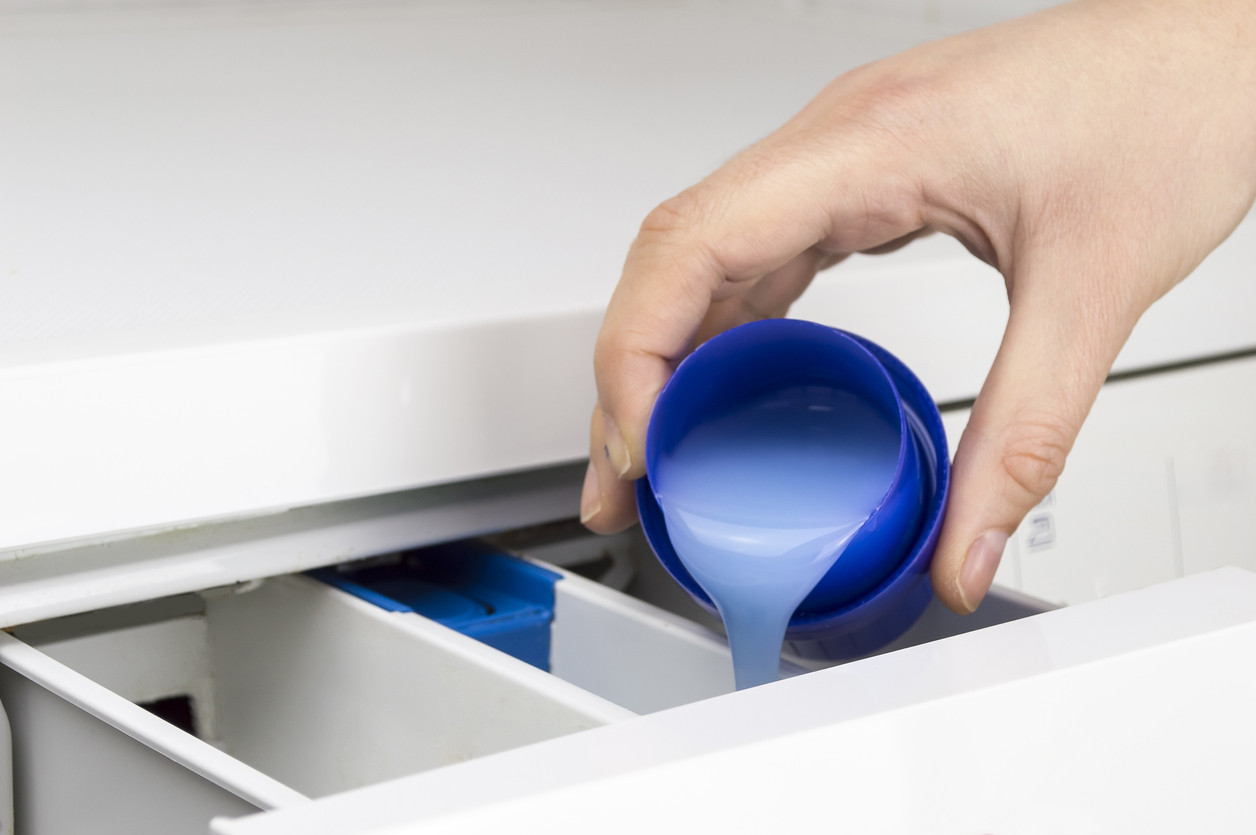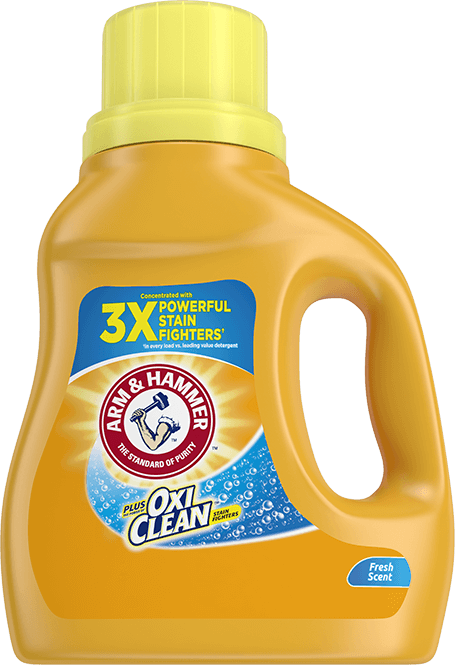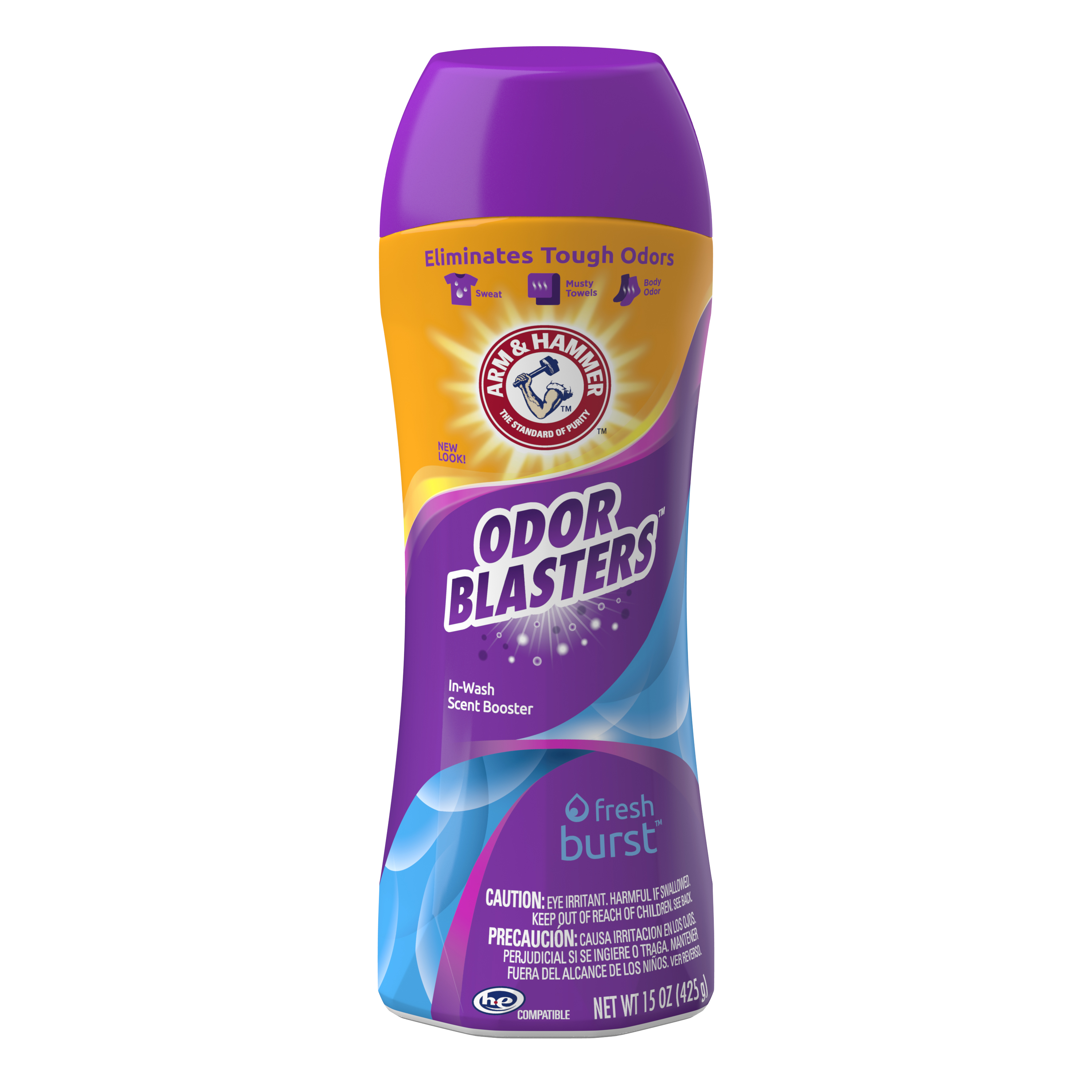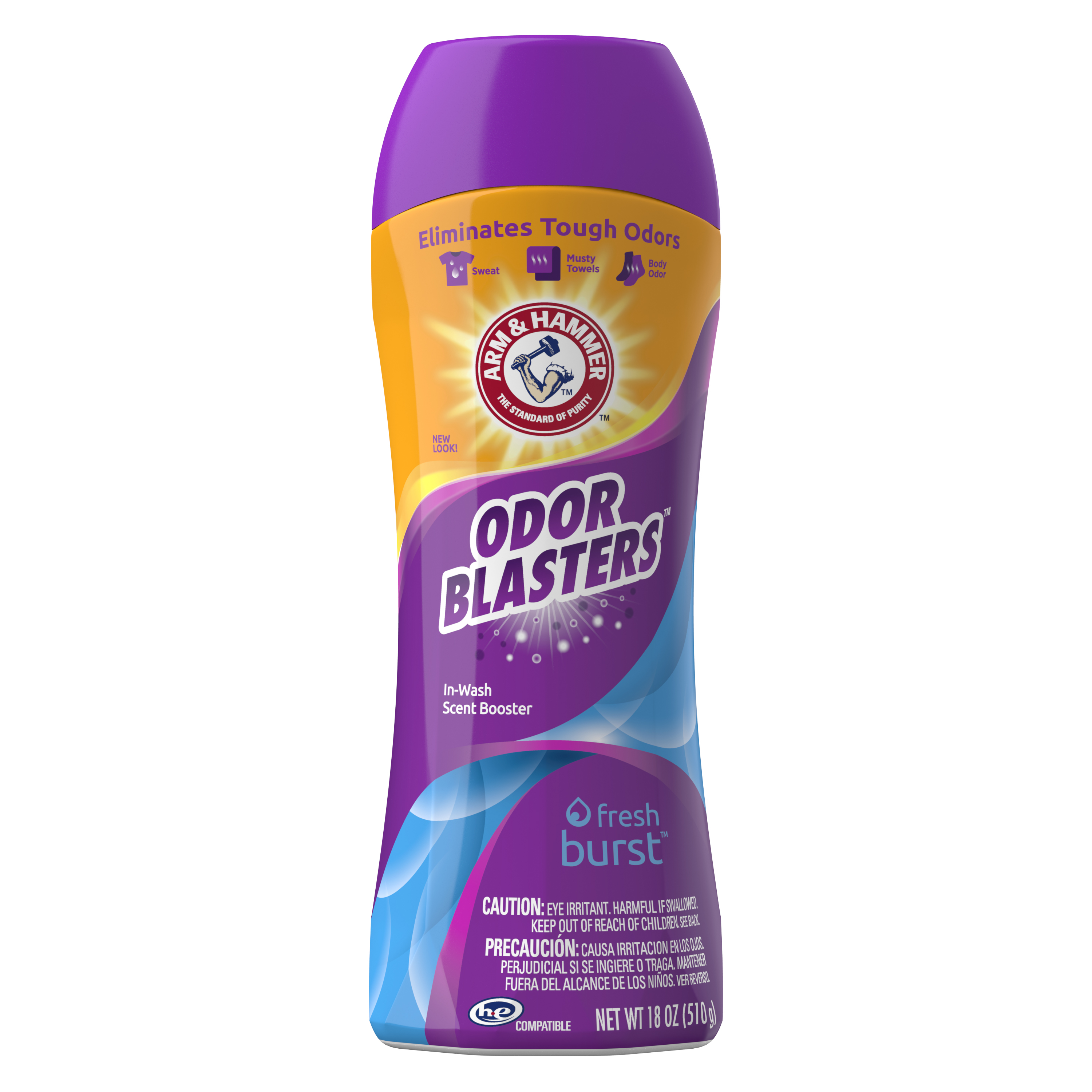How Does Laundry Detergent Clean Clothes?
Before we get to the steps for how laundry detergent works, let’s talk about the science behind it. Although the science and engineering behind this common household task are quite complex, the basic principles that get clothes clean are more easily understood.
Chemical, mechanical, and thermal energies work together to remove dirt, oils, and odors when you use laundry detergent to wash clothes in your machine.
- Temperature, or thermal energy. The temperature of the water affects how well your laundry detergent works and how clean your clothes get. Hotter temperatures work best, but they can also shrink or damage your clothes. For best results, use the hottest temperature water that your clothing label allows.
- Agitation/Movement, or mechanical energy. The washing machine tumbles or shakes its contents during the wash and spin cycles. These mechanical actions help separate dirt from the clothes and get water into and out of the items.
- Detergent, or chemical energy. Putting your clothes in hot water and agitating them isn’t going to clean them effectively. The detergent is where the laundry magic happens. Thermal energy and mechanical energy are just helpers for the chemical reactions that find, surround and dissolve dirt, oils, and odors.
How Laundry Detergents Work: Step 1, Penetrate the Fabric
This may seem strange, but part of the job of laundry detergents is helping your clothes get wet. If you’ve ever watched rain hit a window or car windshield, you know that surface doesn’t get uniformly wet. The water splashes into droplets that hold their shape and do not spread out. This behavior is because of surface tension.
“Surface Acting Agents,” or surfactants, are needed to reduce the surface tension and encourage the water to meet the clothing fibers. Since water carries the surfactants and other ingredients, this process allows them to penetrate the clothing fibers to get them clean.
There are two main types of surfactants used in laundry detergents, anionic and non-ionic. Most detergents have more than one type of surfactant.
- Non-ionic surfactants have no electrical charge. They are especially useful for removing oils and organic dirt.
- Anionic surfactants carry a negative electrical charge, which makes one end of the molecule attracted to water and the other end attracted to dirt and oil particles.
Surfactants trap particles of food, dirt, sweat, and oils from the clothing fibers to carry them out of your laundry.
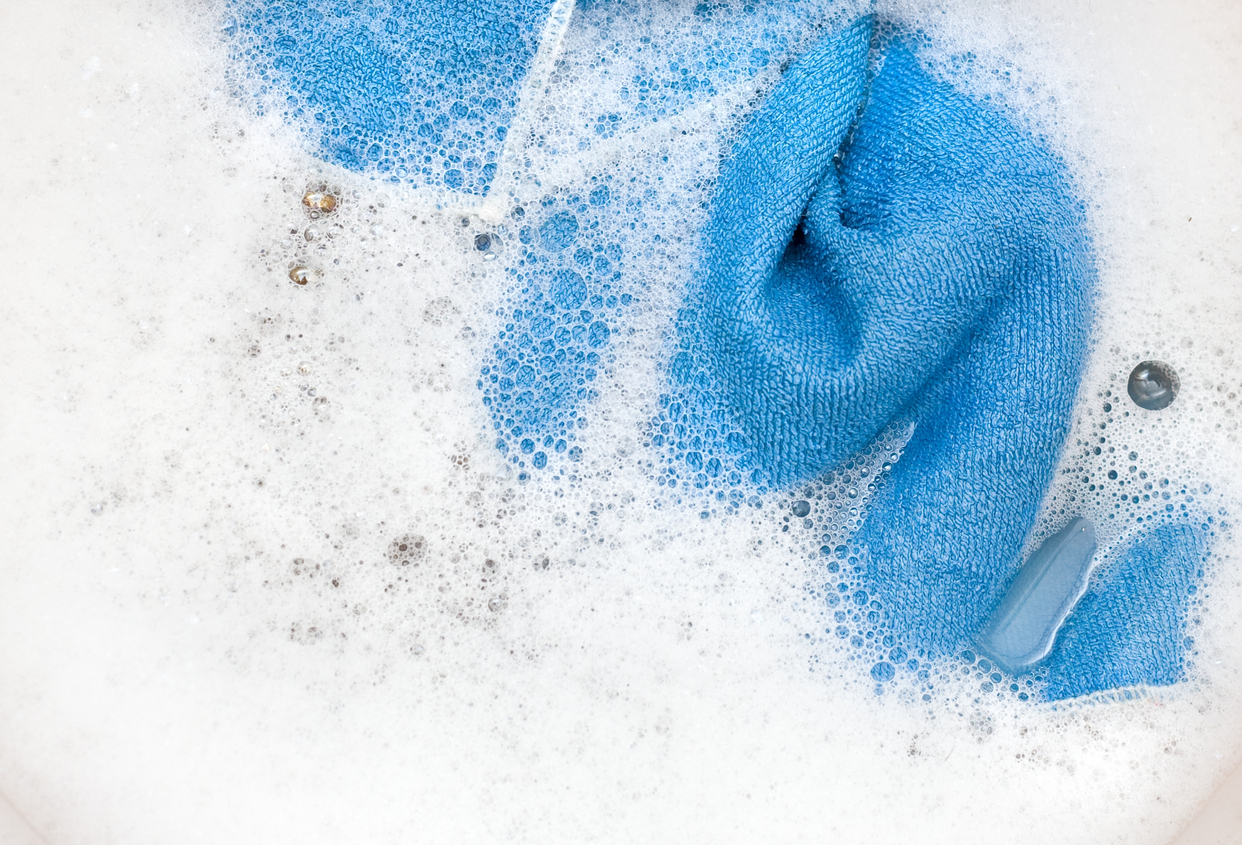
How Laundry Detergents Work: Step 2, Surround & Trap Dirt & Metals
A trio of ingredient types work together to locate and eliminate dirt, oils, and metals in the wash. Once again, surfactants are the hero, along with substances known as chelators or builders. In some detergents, enzymes also identify and break down specific stains.
Chelators
You’ve probably never stopped to think about it, but we don’t wash our clothes in pure water. All water that comes from our taps, whether from a municipal water supply or your own well, contains elements such as salts and metal ions. Whether naturally occurring or added for safety or taste to your water, these elements affect how well a laundry detergent works.
Common metal ions in water include iron, calcium, copper, and magnesium. These metal ions make your laundry detergent less effective. To counteract, detergents include chelators.
Chelators locate metal ions and surround them so they cannot interfere with the surfactants or enzymes that clean your clothes. “Hard” water contains more of these metal ions than “soft” water. If your water is hard, you may need to increase the amount of laundry detergent you use in response.
Enzymes
Some laundry detergents contain one or more enzymes. These biological agents target a specific type of stain, such as protein, starch, fat, or thickeners. Non-enzymatic detergents are very efficient for basic cleaning, but an enzymatic detergent may be needed for complete stain removal of a broader range of stains. Here’s the lineup of enzymes that may be found in your laundry detergent:
- Protease targets proteins found in stains from blood, chocolate, grass, and others.
- Amylase targets starch-based stains, including corn, potatoes, soup, and common thickeners used in ice cream and sauces.
- Lipase breaks down fats and oils.
- Mannanase targets food stains that contain common additives such as guar gum and xanthan gum.
Enzymes are complex proteins used in laundry detergents to catalyze (speed up) reactions to break up stains so they can be washed away.
The surfactants, chelators, and enzymes are on a “search and destroy” mission to locate, surround, dissolve, and break down dirt, oils, and odors.
How Laundry Detergents Work: Step 3, Remove Dirt or Oil from Clothes
Now that the dirt and oils have been located and surrounded, it’s time to pull them out of the clothing fibers and keep them from falling back onto the clothes again. Surfactants team up with anti-redeposition agents to take care of business.
Surfactants attract and repel dirt and water using electrically charged particles.
Think about a magnet. When you try to put two positive or two negative ends together, they repel. A positive to a negative, and you get a bond. This is essentially what’s going on with the anionic surfactants. They’re attracted to the dirt or oil and attach to it. Then, they want to move away from the fabric and toward the water. As they do this, they lift the dirt and oils off the fabric and suspend them in the wash water.
While this happens, the chelators are still keeping the metal ions at bay to allow the surfactants and enzymes to do their jobs.
How Laundry Detergents Work: Step 4, Rinse the Dirt Away
In the rinse cycle, you want the dirt and oils – as well as the detergent itself – to rinse away. Three ingredients work together to make sure this happens:
- Dispersion agents keep the dirt and oil particles suspended in the water so they can drain away.
- Anti-redeposition agents Help prevent dirt, oils, and surfactants from resettling onto clothing and help them rinse away during the rinse cycle. Otherwise, the dirt would come out of the clothing fibers and redeposit right back onto your laundry as the water drains from the washer.
- Anti-sudsing agents help control detergent foam and allow the soap to rinse away more fully.
How Laundry Detergents Work: Step 5, Leave Fresh & Clean Scent
Unless you are using a free and clear formula for sensitive skin, laundry detergents contain a unique scent to infuse your clothes with a pleasant, clean-smelling aroma. Laundry fragrances are deeply personal, and everyone has their preferences. In general, the scent doesn’t change the effectiveness of the detergent, and you can choose your favorite.
In some cases, however, the scent is designed to control odor, such as ARM & HAMMER™ Plus OxiClean™ Odor Blasters, Fresh Burst™. This detergent is formulated to eliminate body odor, musty towels, and sweat.
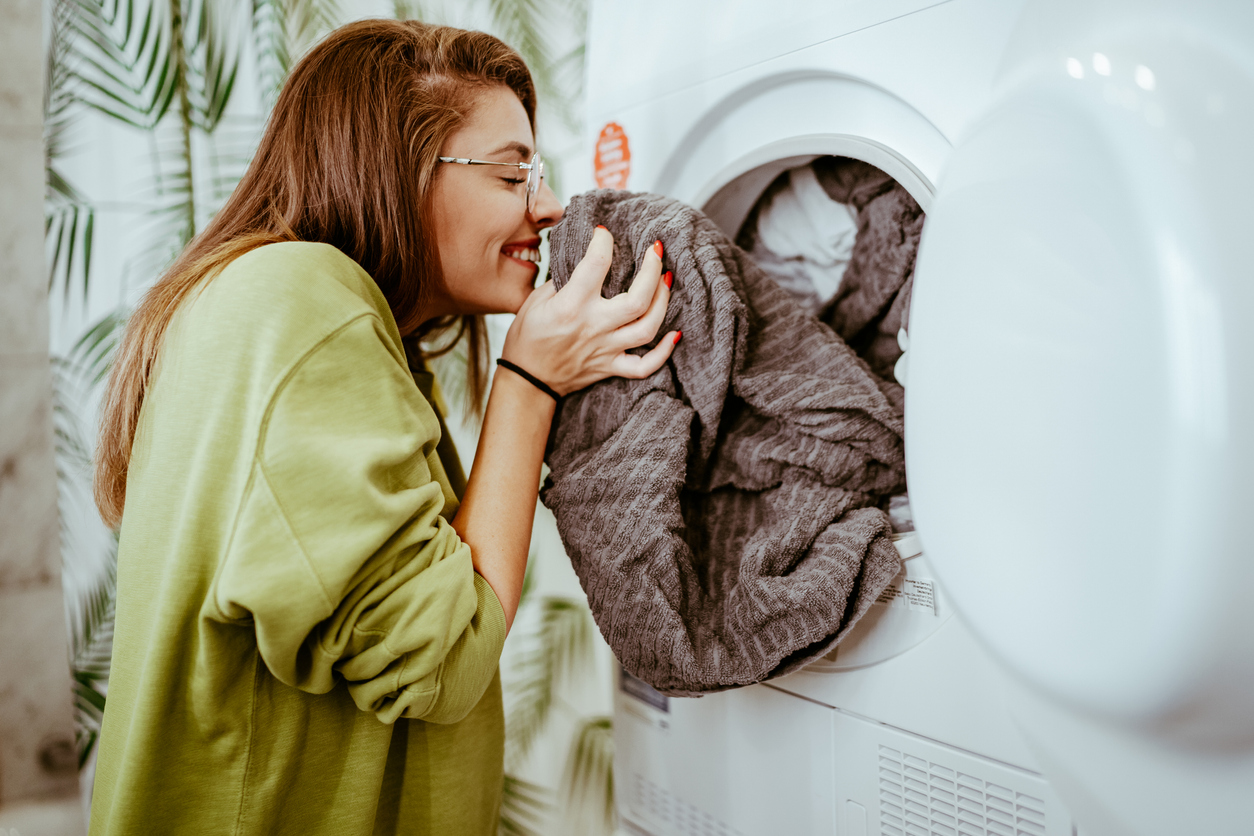
Tips for Helping Your Laundry Detergent Work Correctly
There are some actions you can take to help your laundry detergent work most effectively. These include:
- Not overloading your washing machine. Your clothes need room to move around for the detergent to do its job and to keep your laundry from getting tangled in the machine.
- Using the warmest water temperature recommended by your clothing labels. Most detergents work best in warm or hot water.
- Separating your laundry by color, fabric type, or soil level. Doing this allows you to customize the settings on your machine and helps the detergent work better on specific clothes and stains.
- Using the correct amount of detergent for each load. Too much detergent wastes money and may leave soap behind on your clothes, making them feel stiff or itchy. HE washing machines sense the suds and fill force additional rinse cycles, wasting time and water. Follow the instructions on your detergent to ensure you’re using the correct amount. Individual dose detergent paks help regulate the amount you use.
The Right Detergent for Your Laundry Needs
ARM & HAMMER makes a variety of laundry detergent formulas to suit your preferences, needs, and budget. Choose from individual dose Power Paks, liquid and powdered detergents in a variety of popular scents. If you are sensitive to dyes or fragrance, ARM & HAMMER™ also makes detergents for sensitive skin, free of one or both of these ingredients.
Now you know a bit more about how laundry detergents work. There’s a lot more to it than tossing your clothes into the machine, adding detergent, and pushing start. Thankfully, our research scientists take care of all of that for you. So sit back and relax while ARM & HAMMER™ laundry detergents put the muscle – and the science – to work for you.
Read more about the laundry list of ingredients commonly found in detergents in our laundry ingredients glossary.
